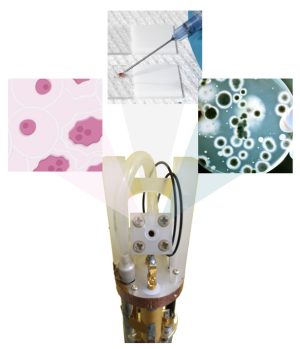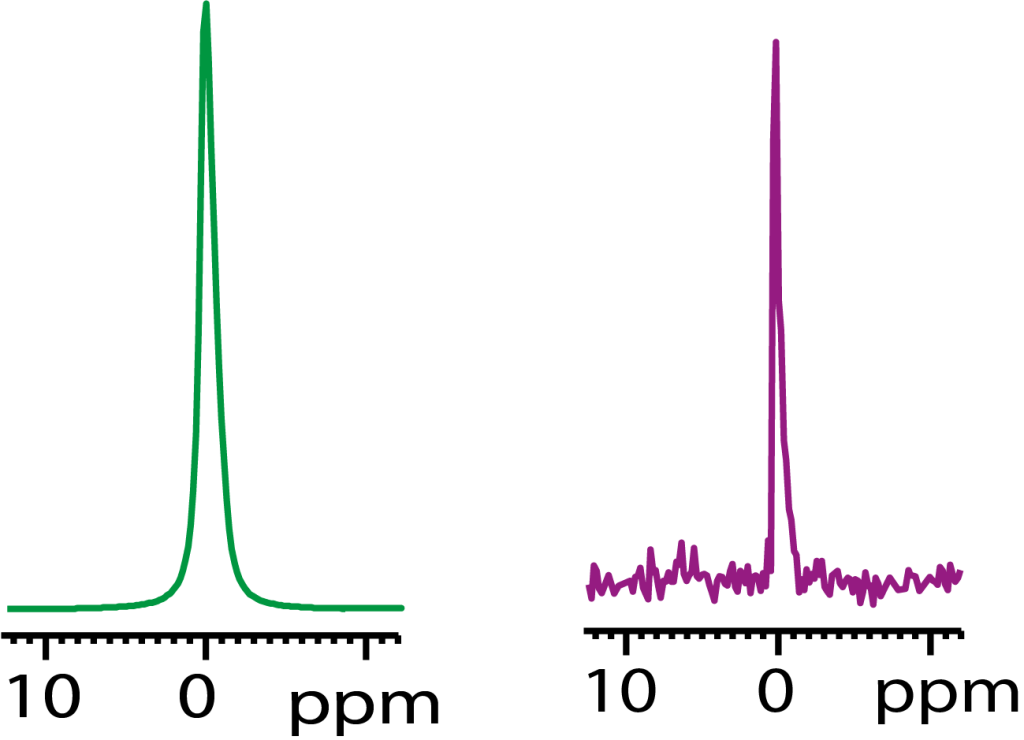HR μMAS
The development of a ‘high-resolution’ capable micro-Magic Angle Spinning (HRμMAS) probe faces unprecedented challenges due to the difficulty of achieving a homogeneous magnetic field in a tiny volume of less than 500 nanoliters without compromising sensitivity. Despite this, the results from the HRμMAS probe have opened up new possibilities in NMR-based metabolomics. It is now possible to screen limited tiny cells and organisms that were previously considered impossible. Needle biopsy with NMR can also be realized using HRμMAS, making it a possible tool for health science research.
Contact: Alan Wong


Hyperpolarization
To compensate for the lack of sensitivity of NMR, hyperpolarization, in which the polarization of a more ordered system such as photons or electrons is transferred to the nuclear spins, can be used. At LSDRM, two hyperpolarization methods are being developed: optical pumping of noble gases and para-hydrogen transfer.
Contact: Céline Boutin, Patrick Berthault, Gaspard Huber
Fluidics
Another way of increasing the sensitivity of magnetic resonance is to miniaturize the detection system and bring it closer to the sample. In addition, circulating the solution to be studied offers several advantages, such as bypassing longitudinal relaxation to save analysis time. These developments in fluidics, aided by 3D printing, have been applied to real-time operando monitoring of chemical and electrochemical reactions, and to the study of gases as probes for porous materials.
Contact: Patrick Berthault





